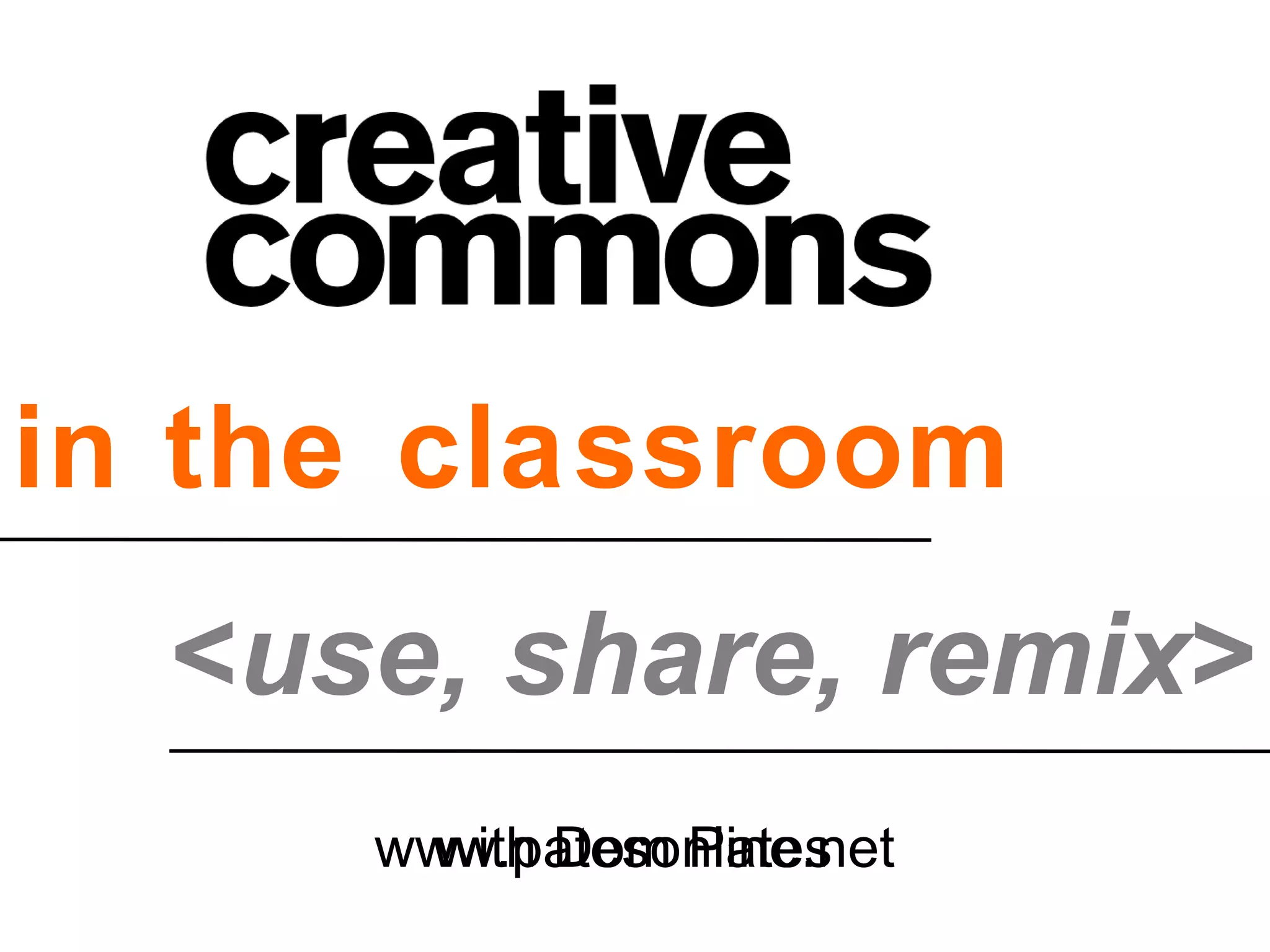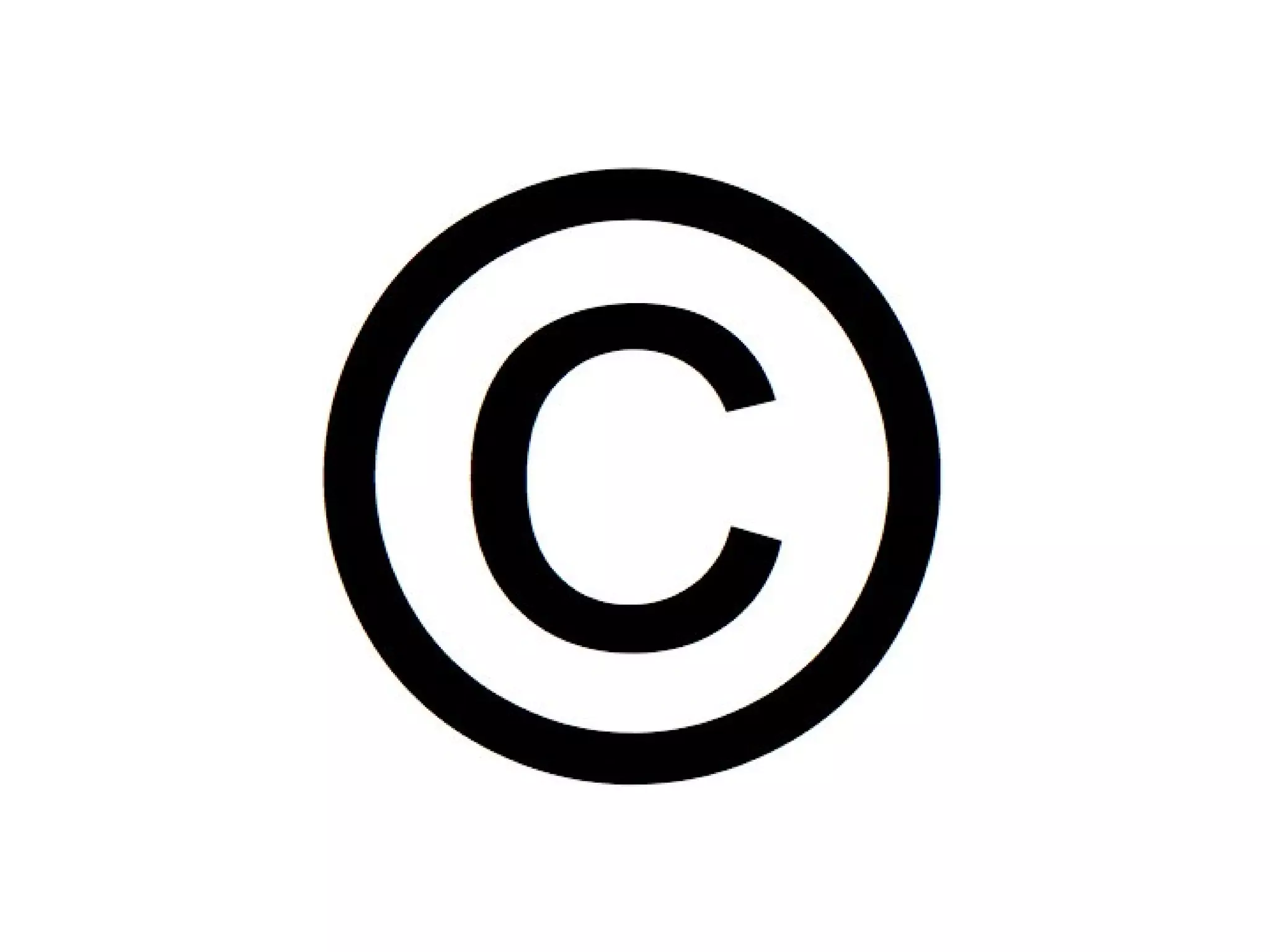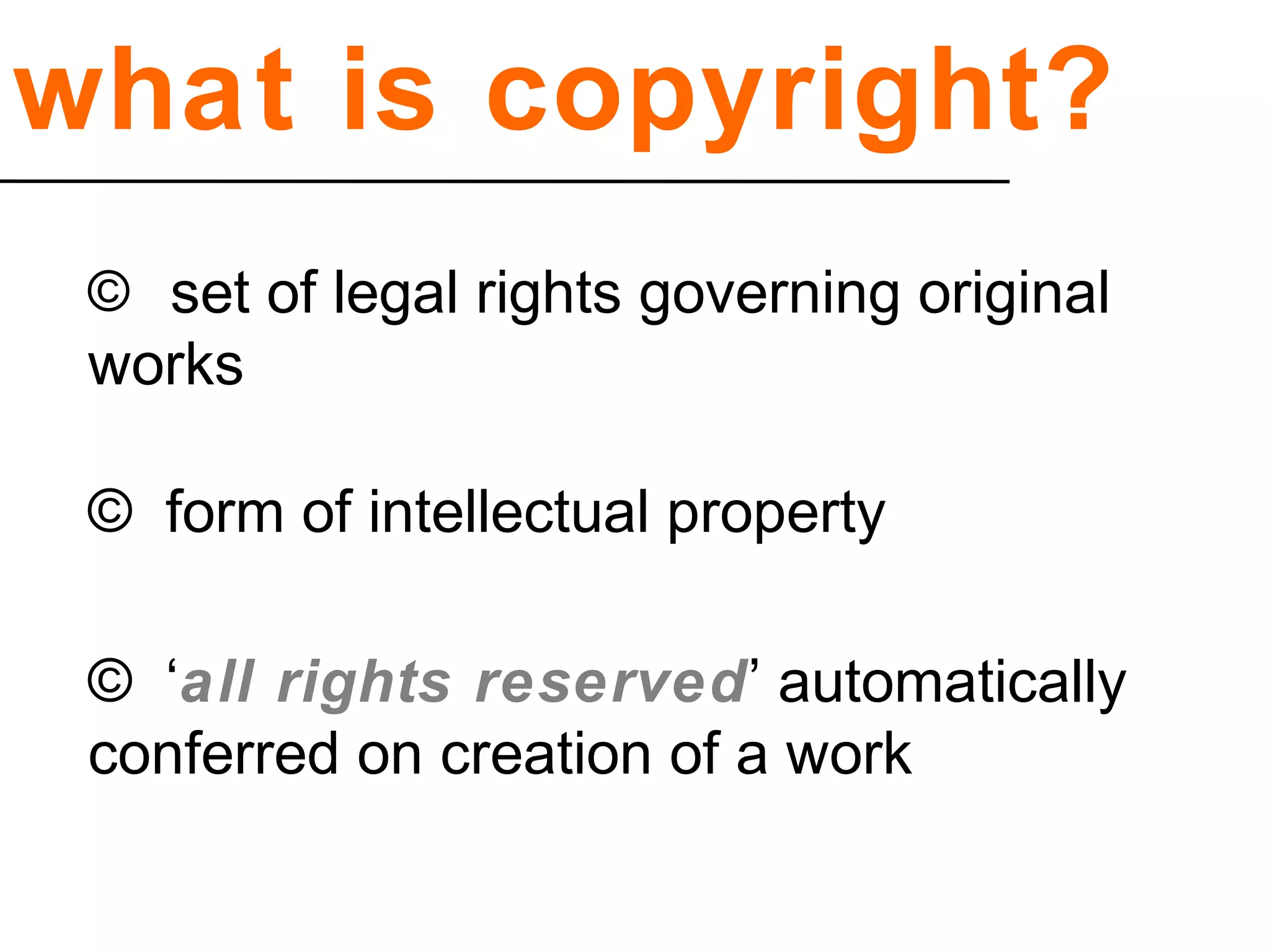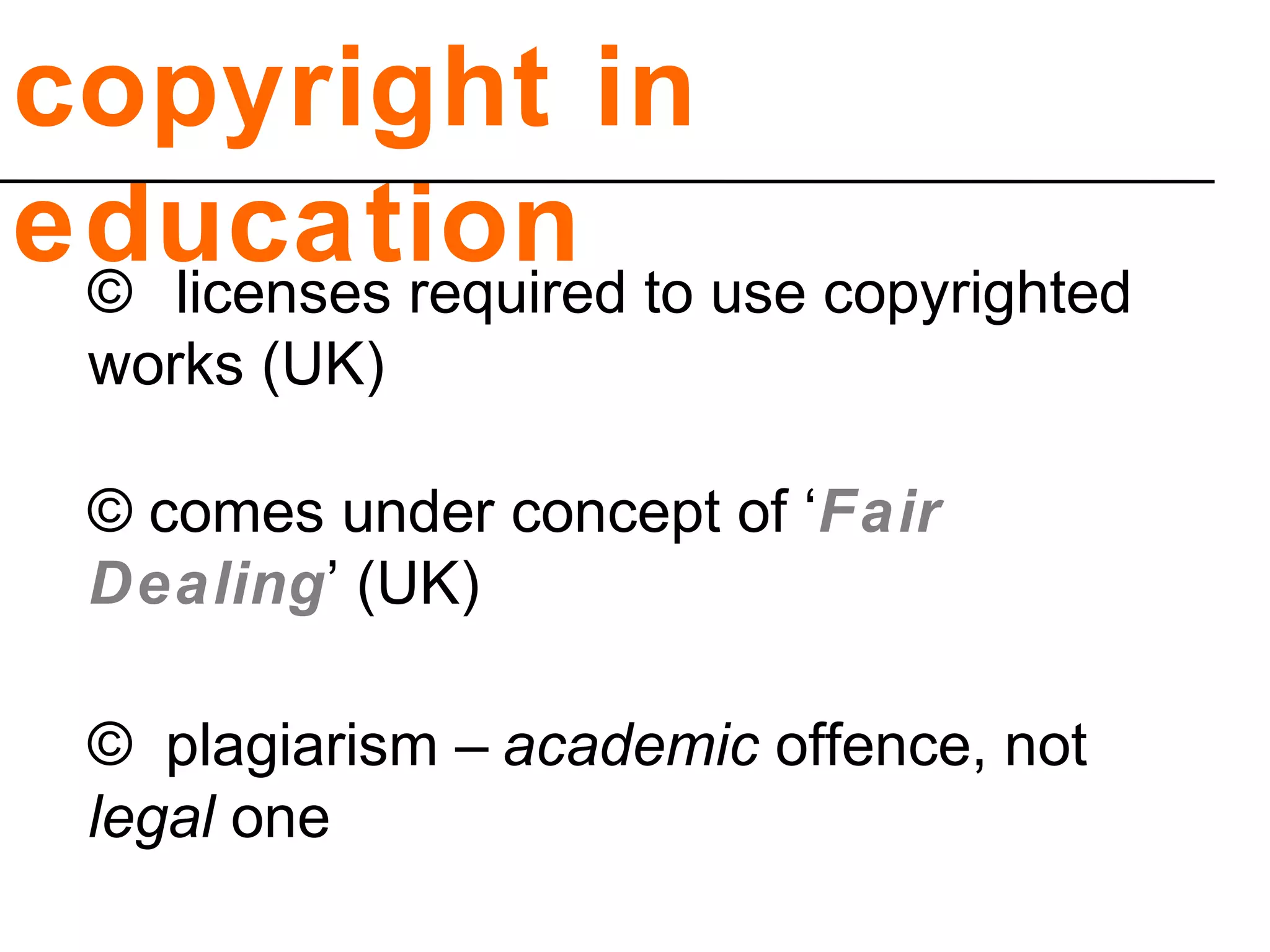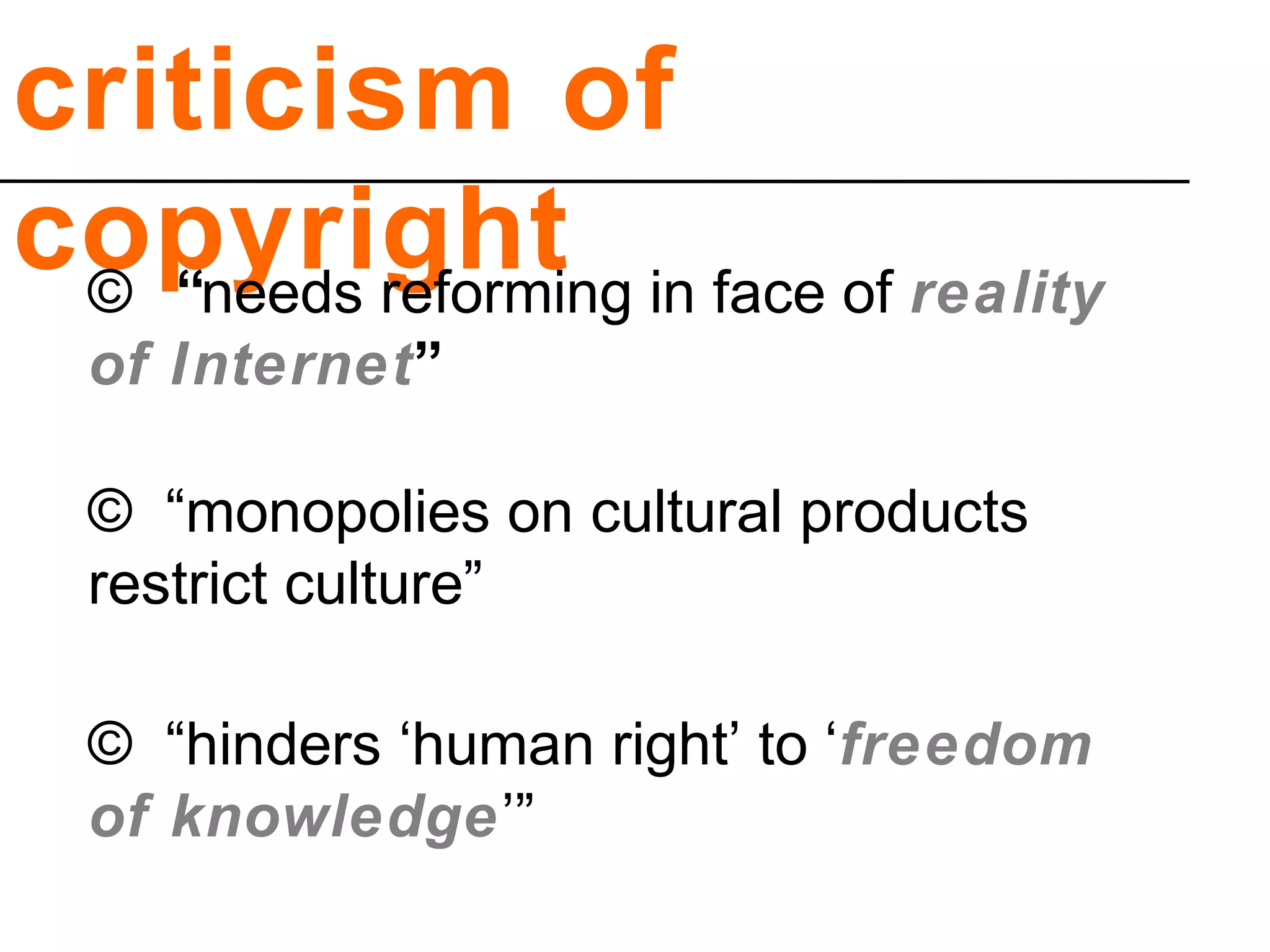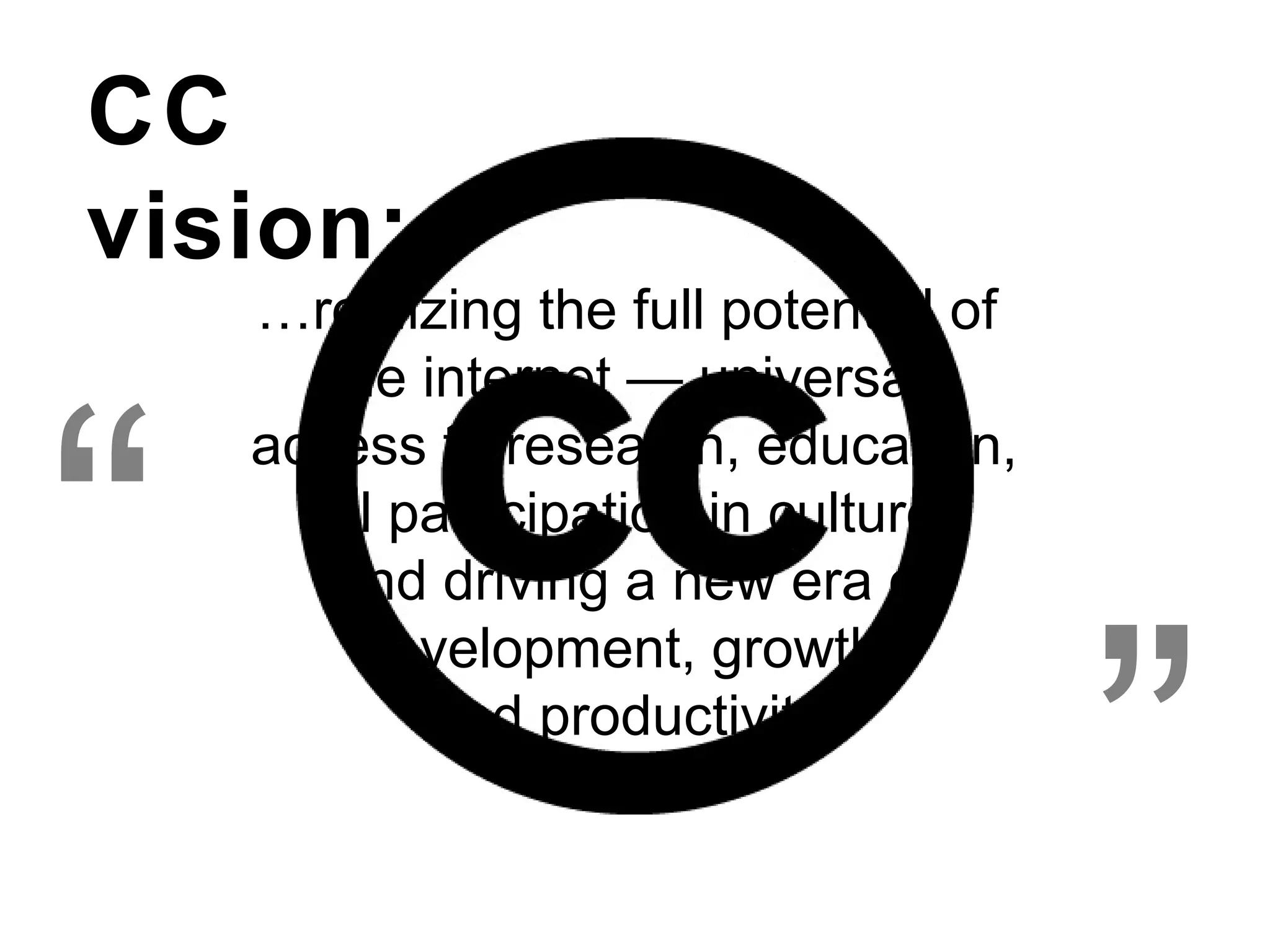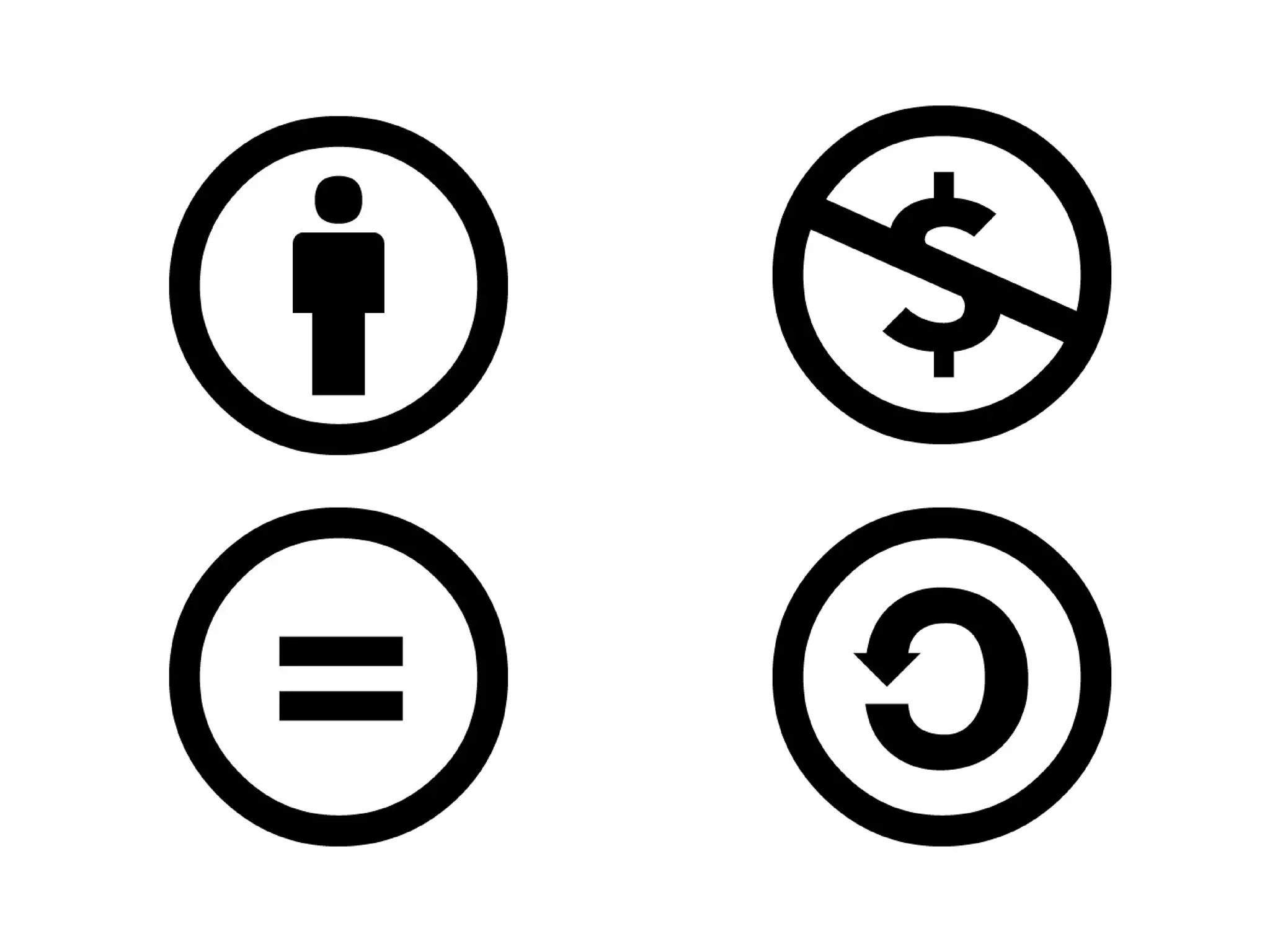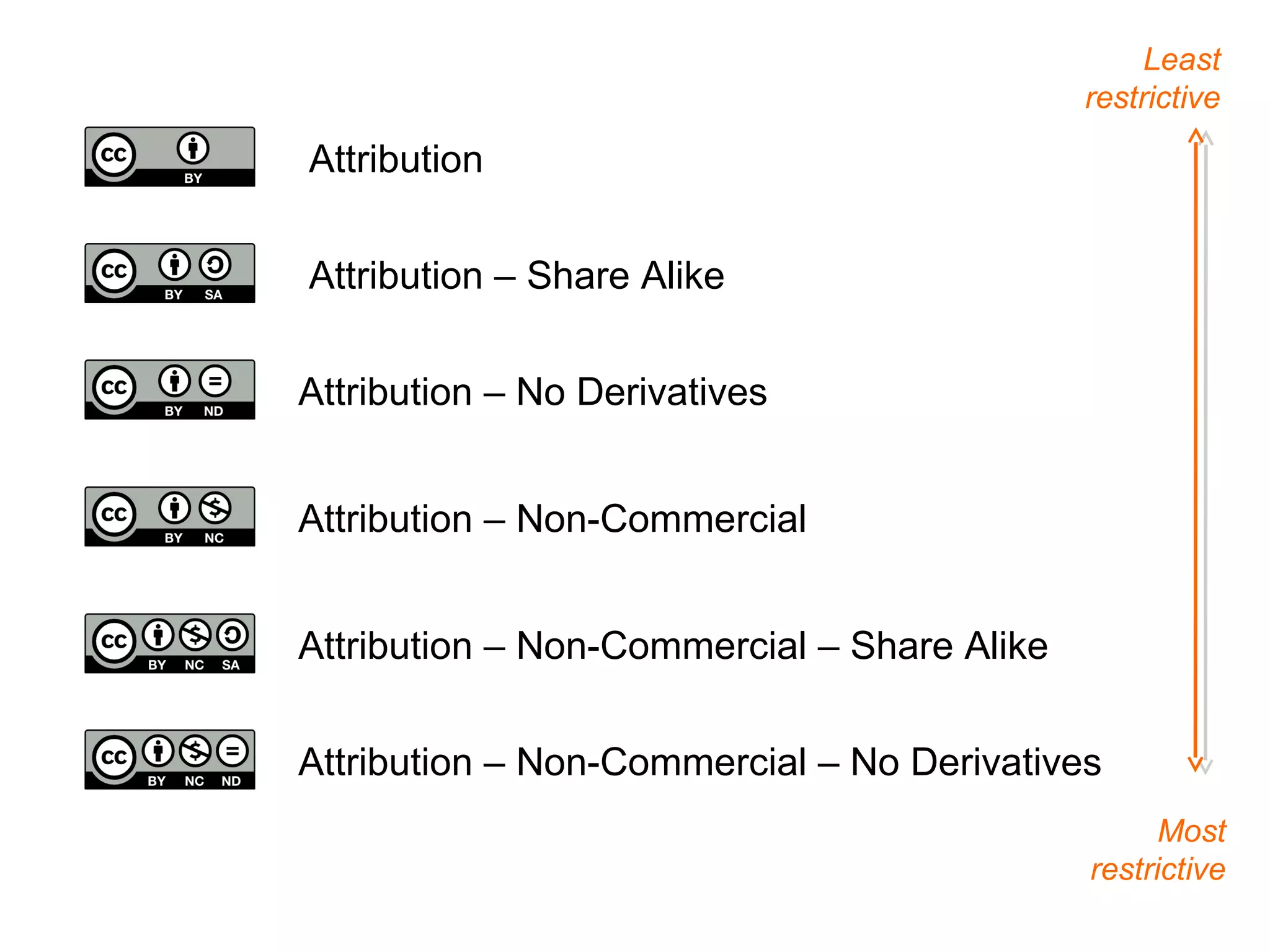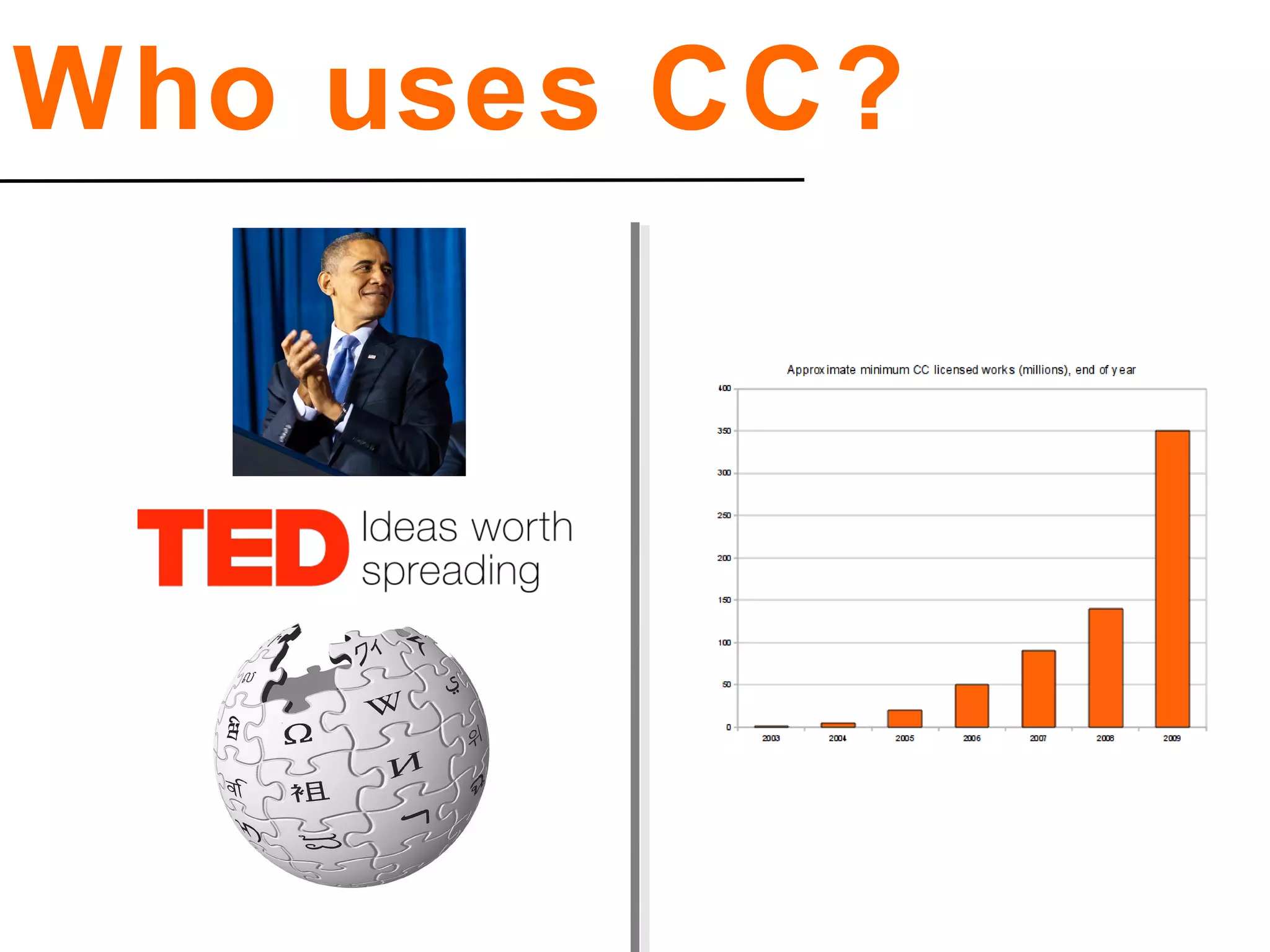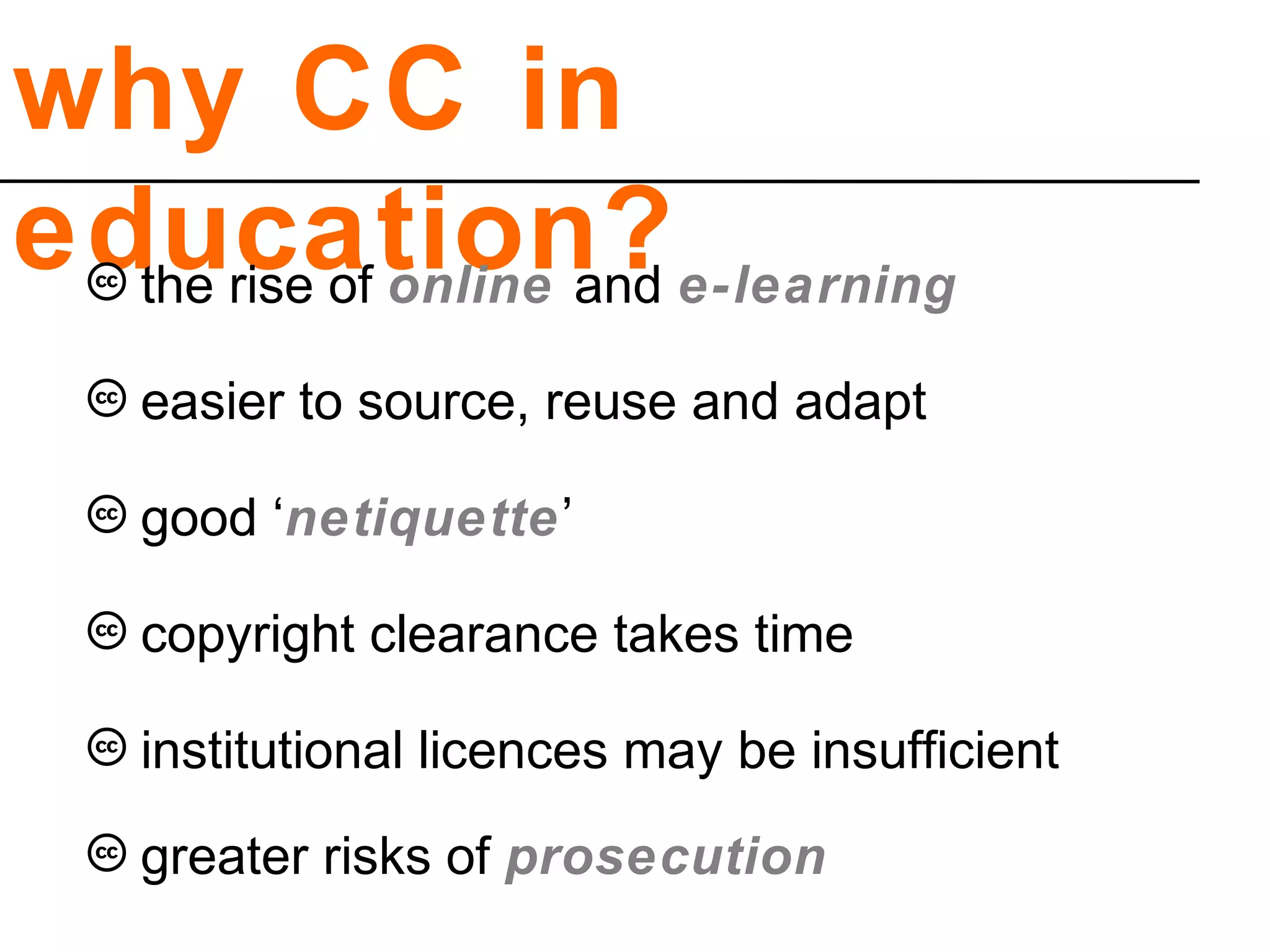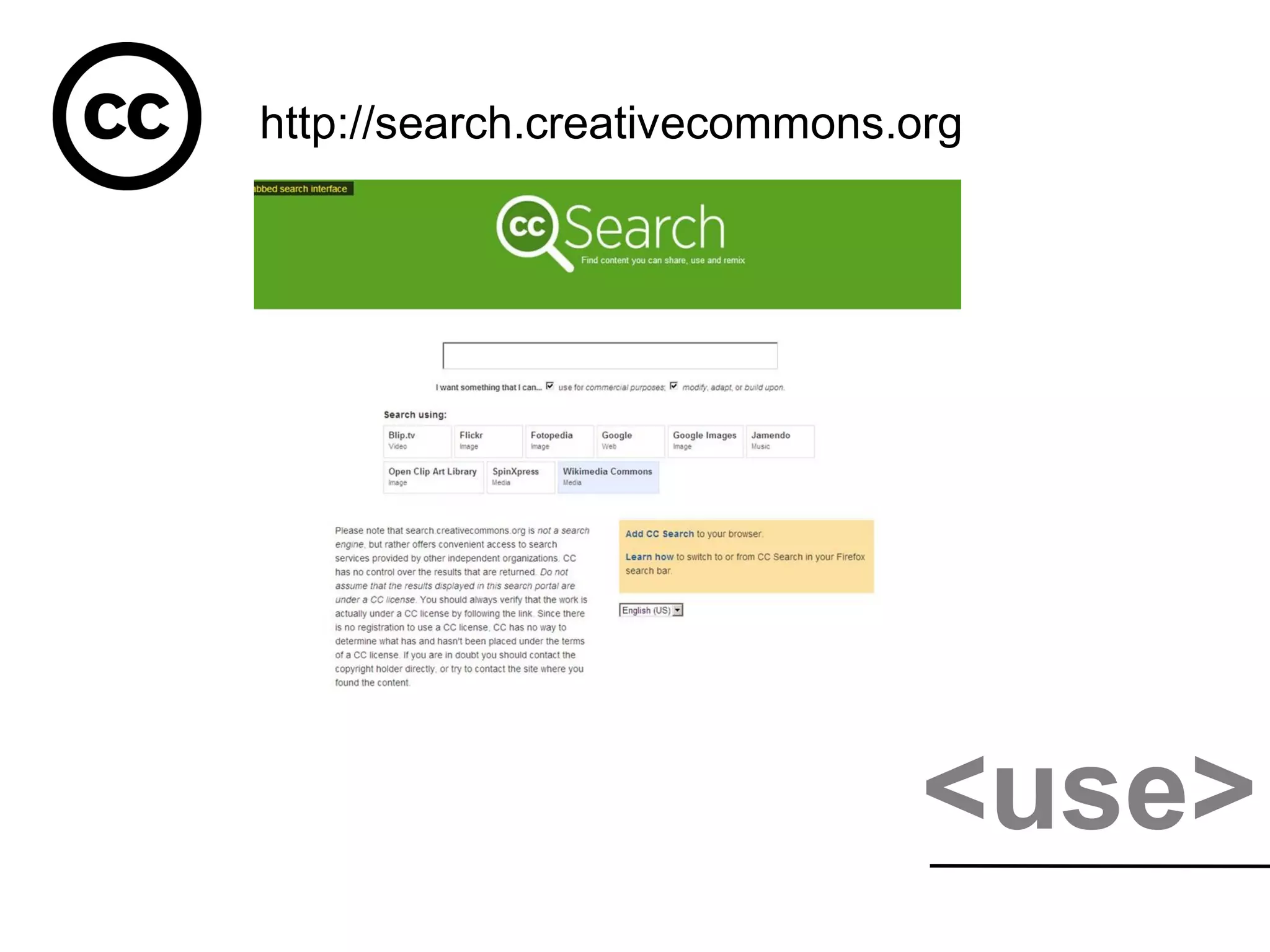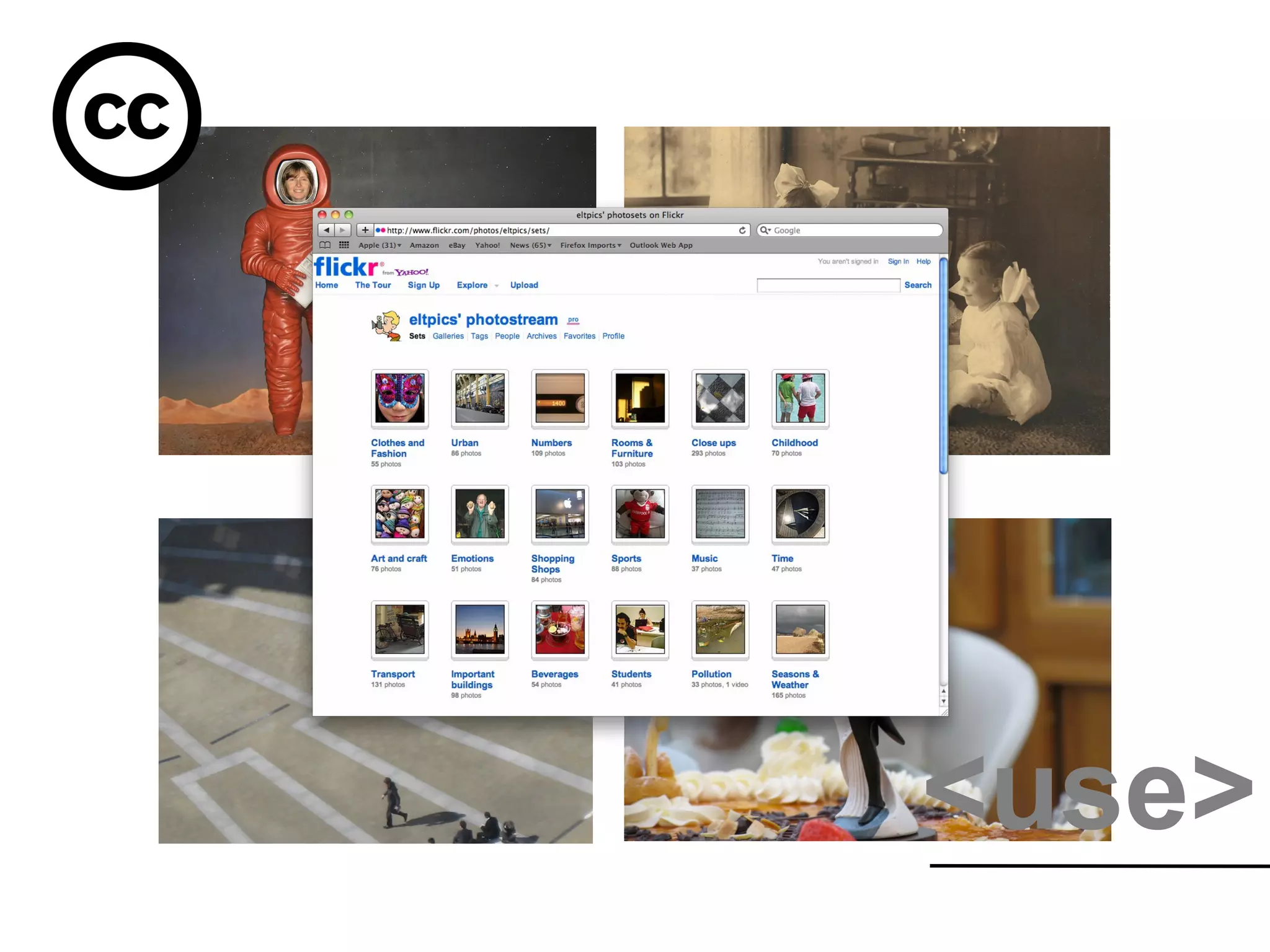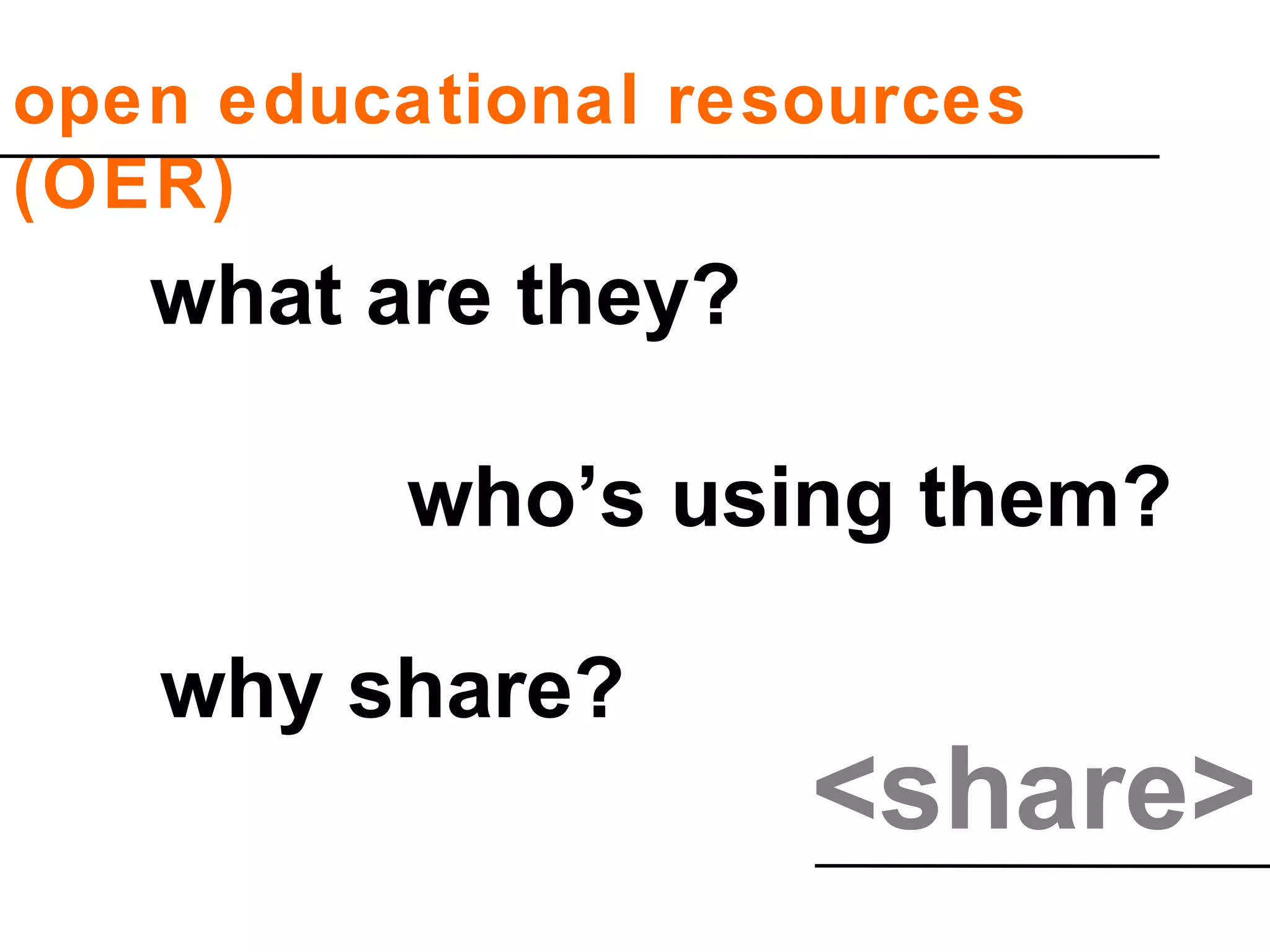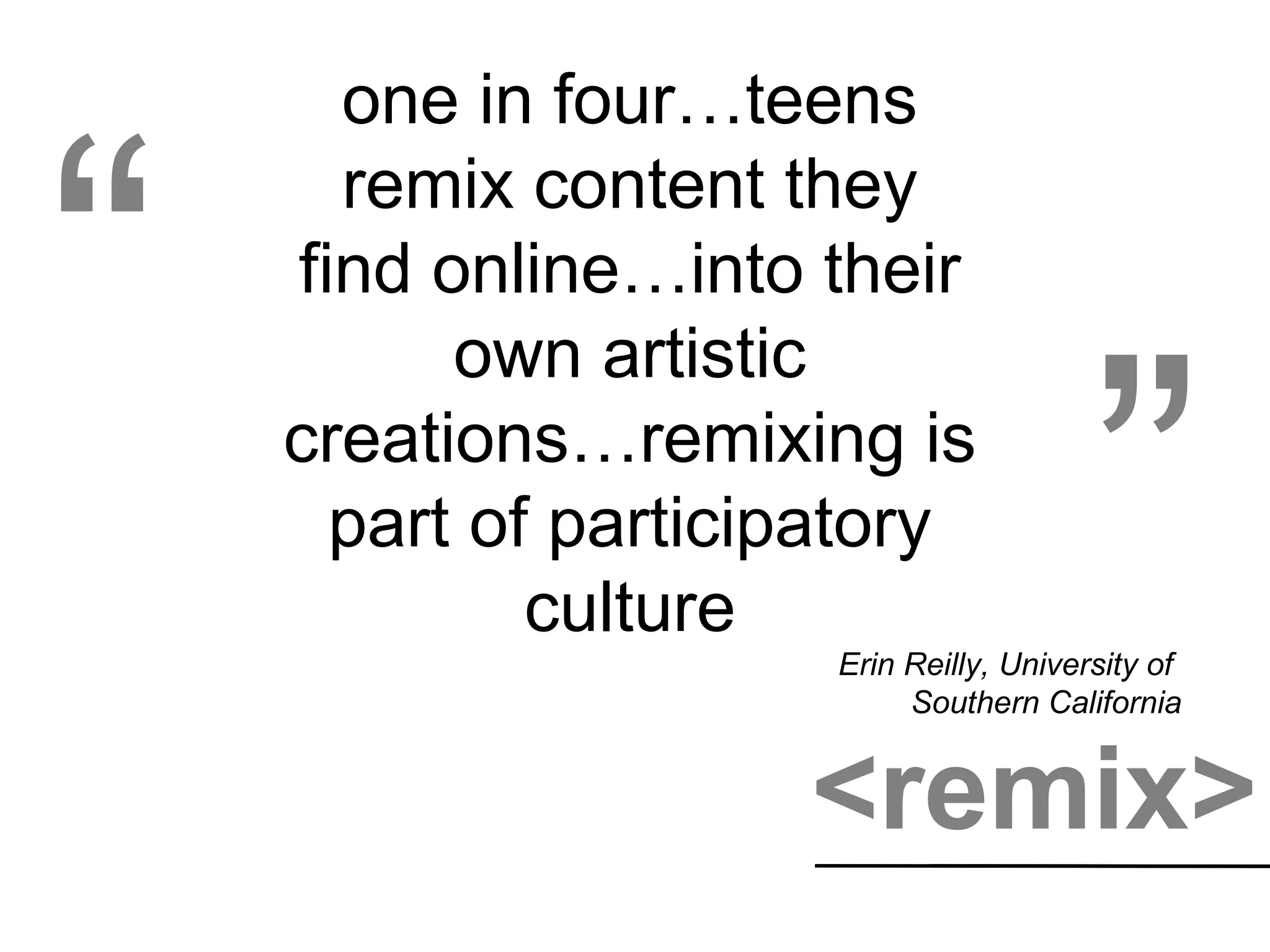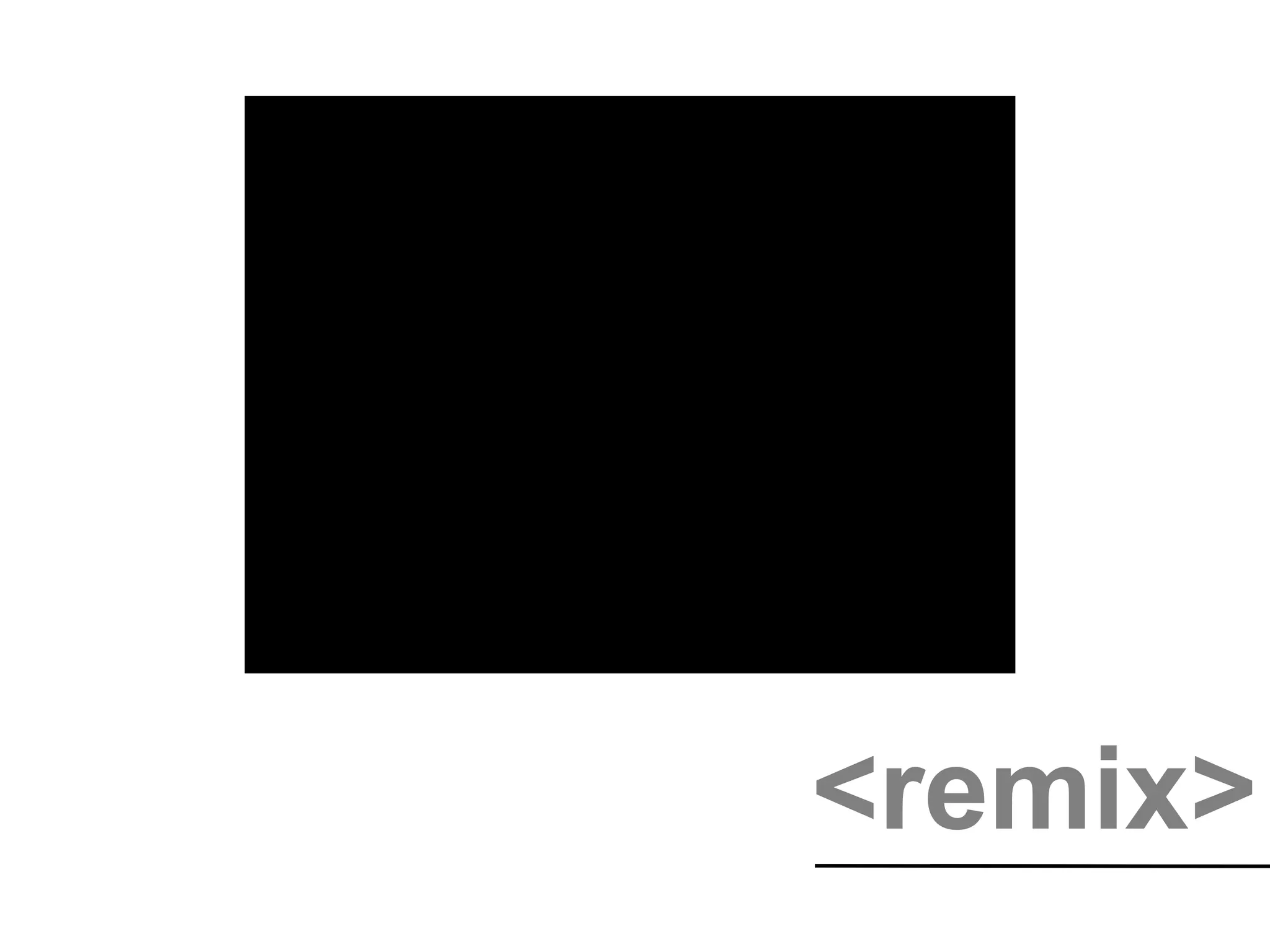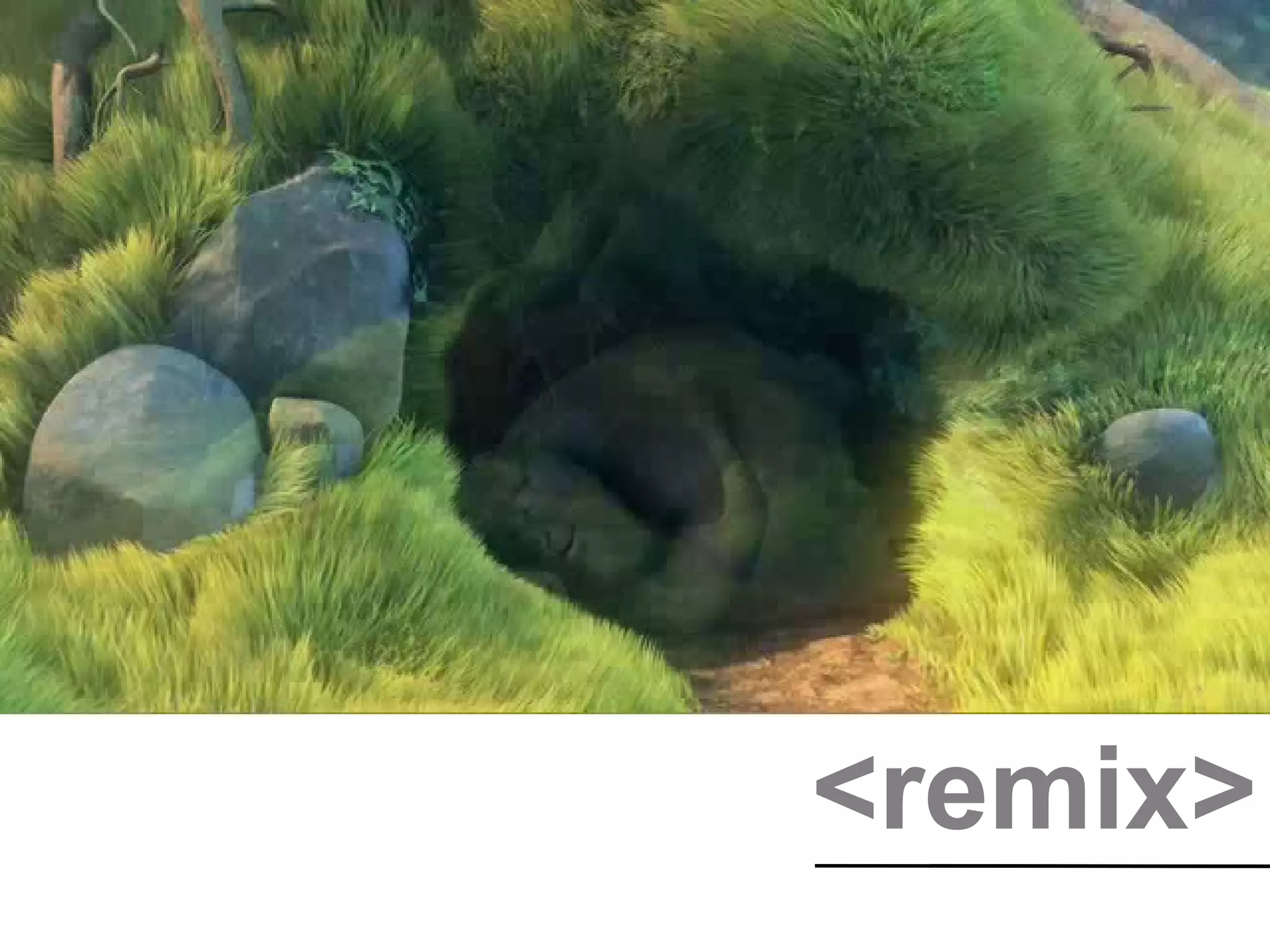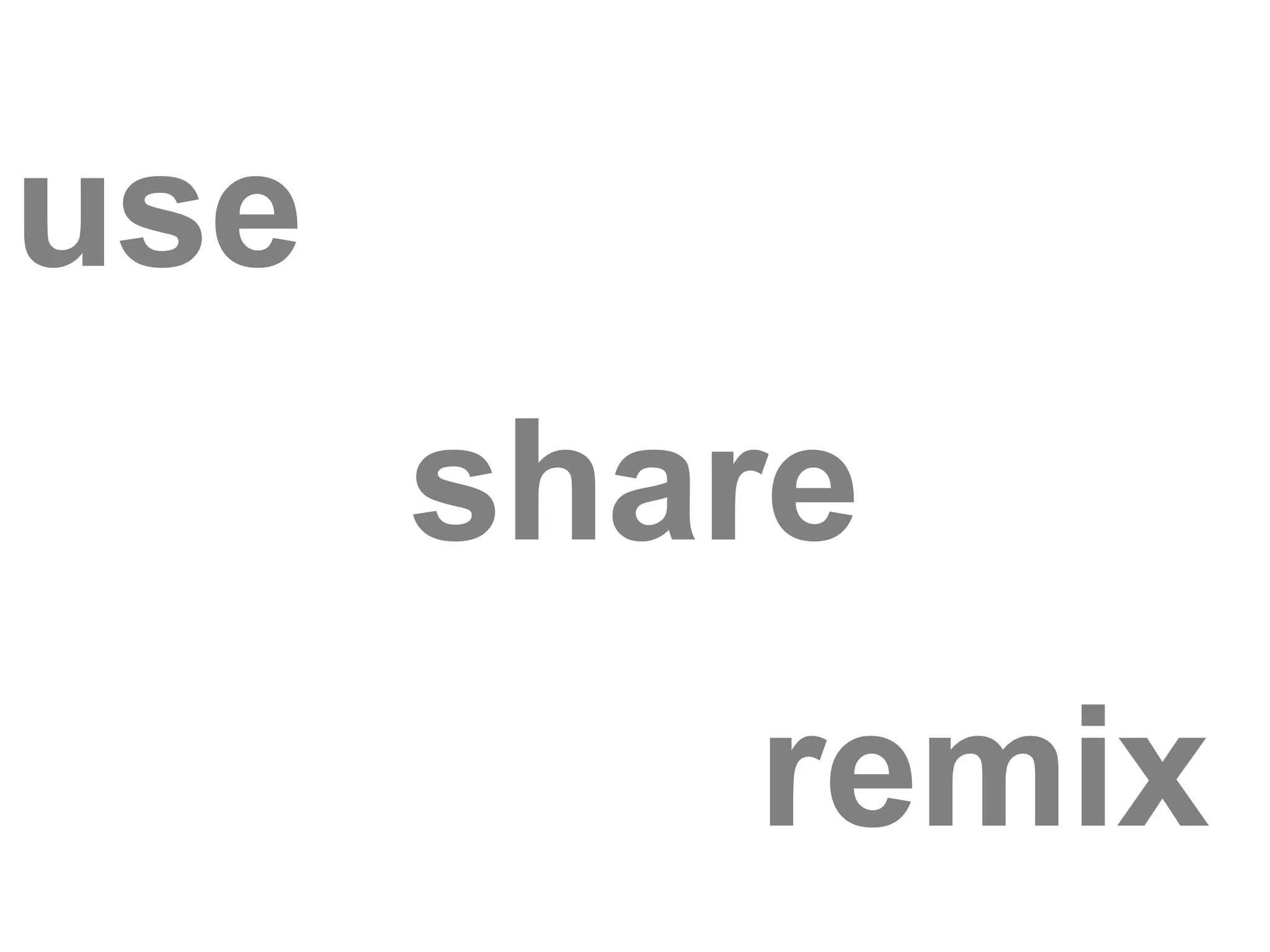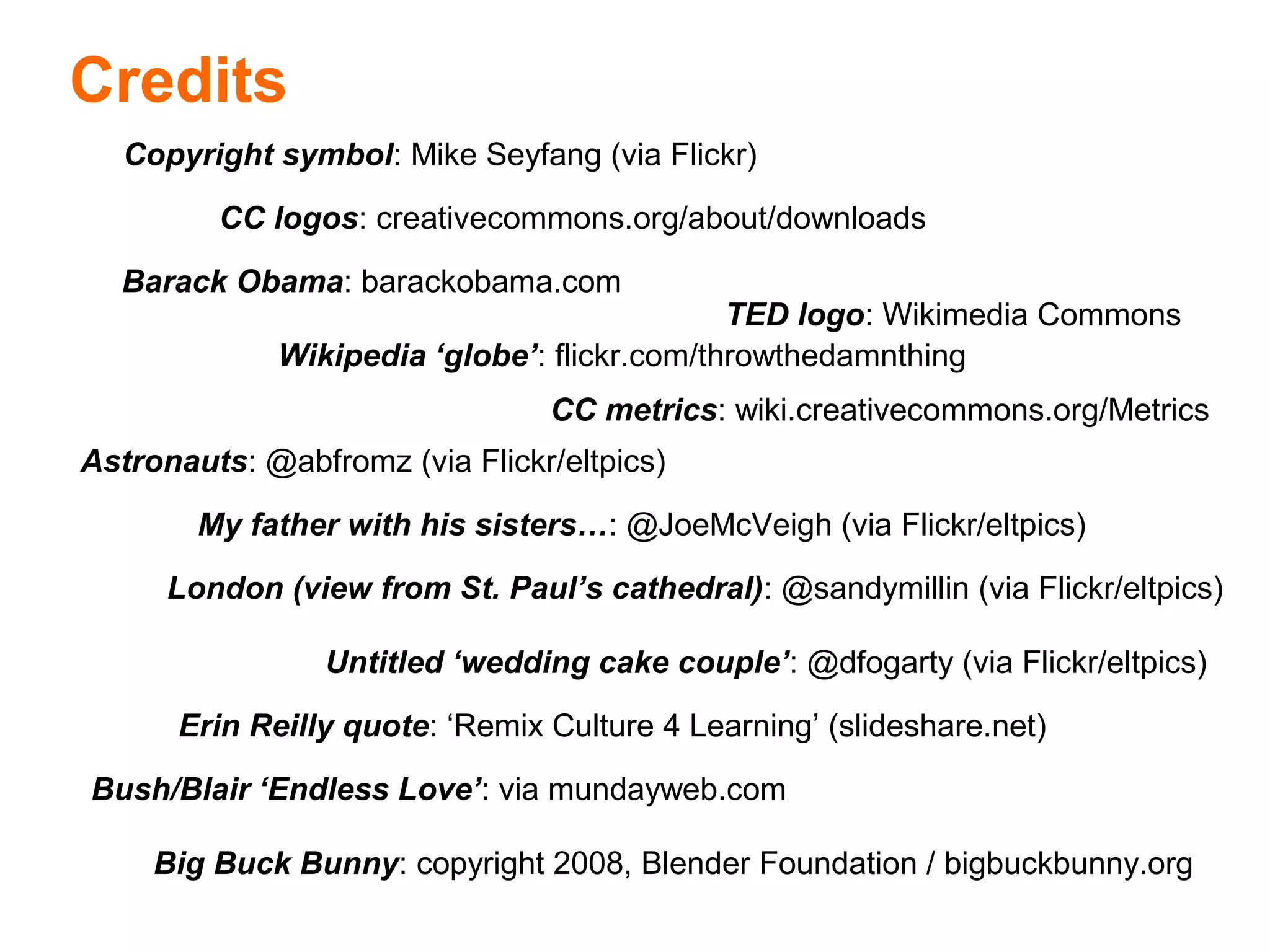This document discusses copyright and Creative Commons (CC) licenses. It explains that copyright is a set of legal rights that protect original creative works. CC licenses provide alternatives to traditional "all rights reserved" copyright by allowing content to be shared and reused under certain conditions. The document outlines the different CC licenses in order from least to most restrictive and notes that CC licenses are used by individuals, organizations, and educational institutions to share content openly while still maintaining attribution rights. It advocates for the use of CC in education as a way to more easily source, reuse, adapt, and share content.
